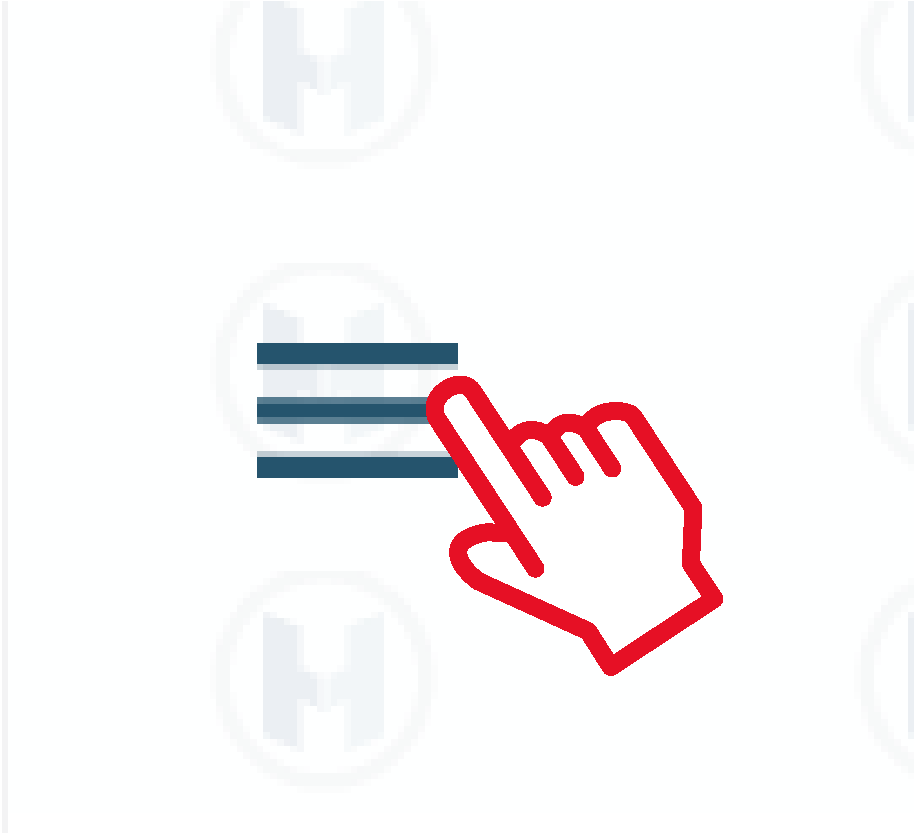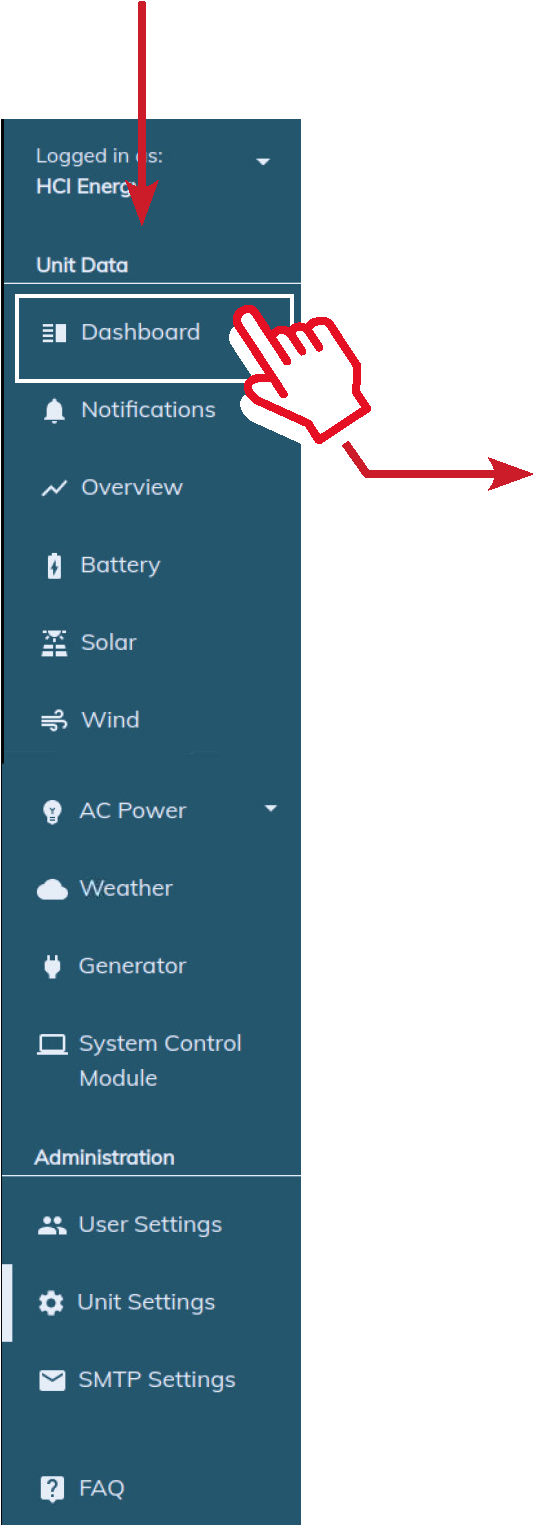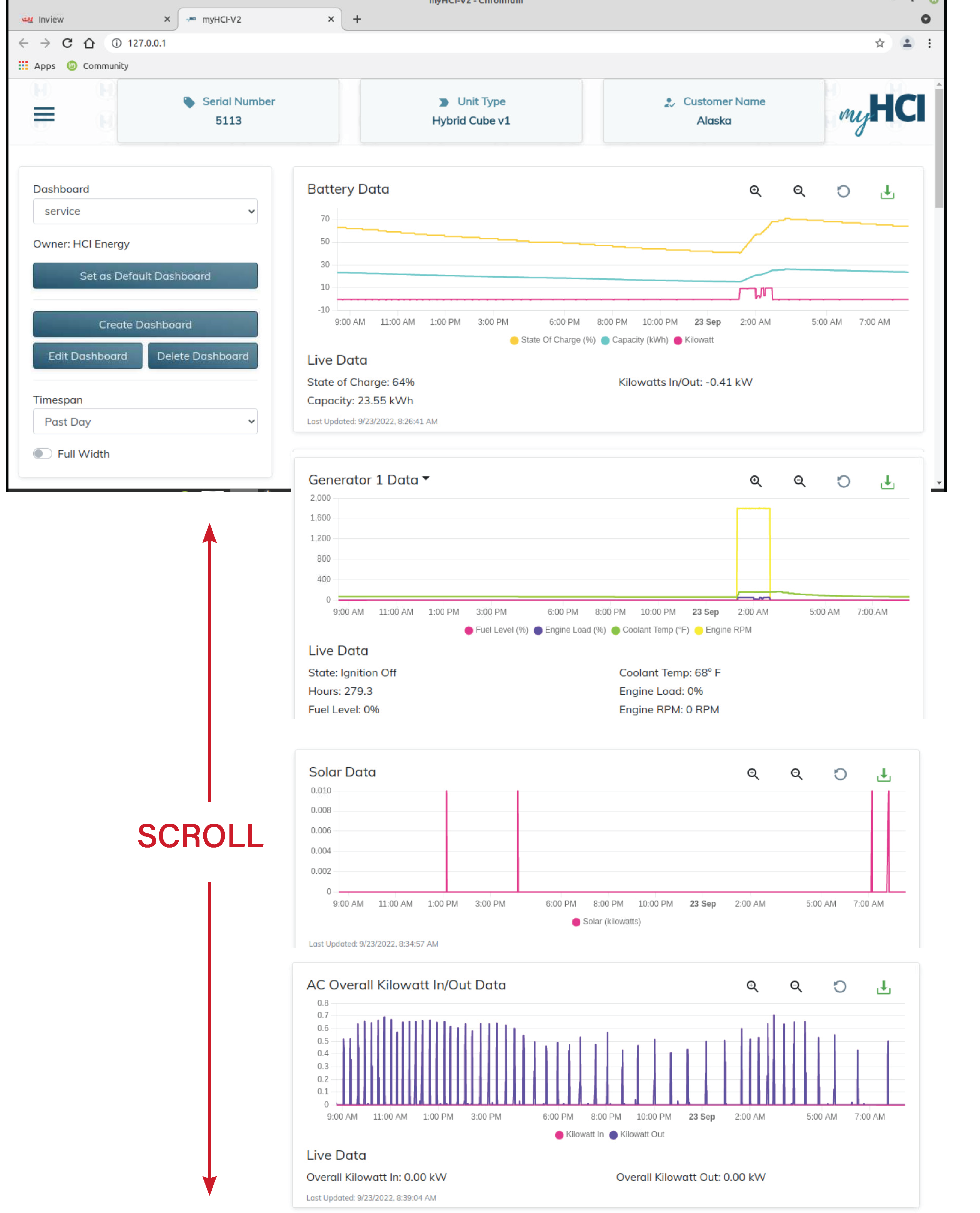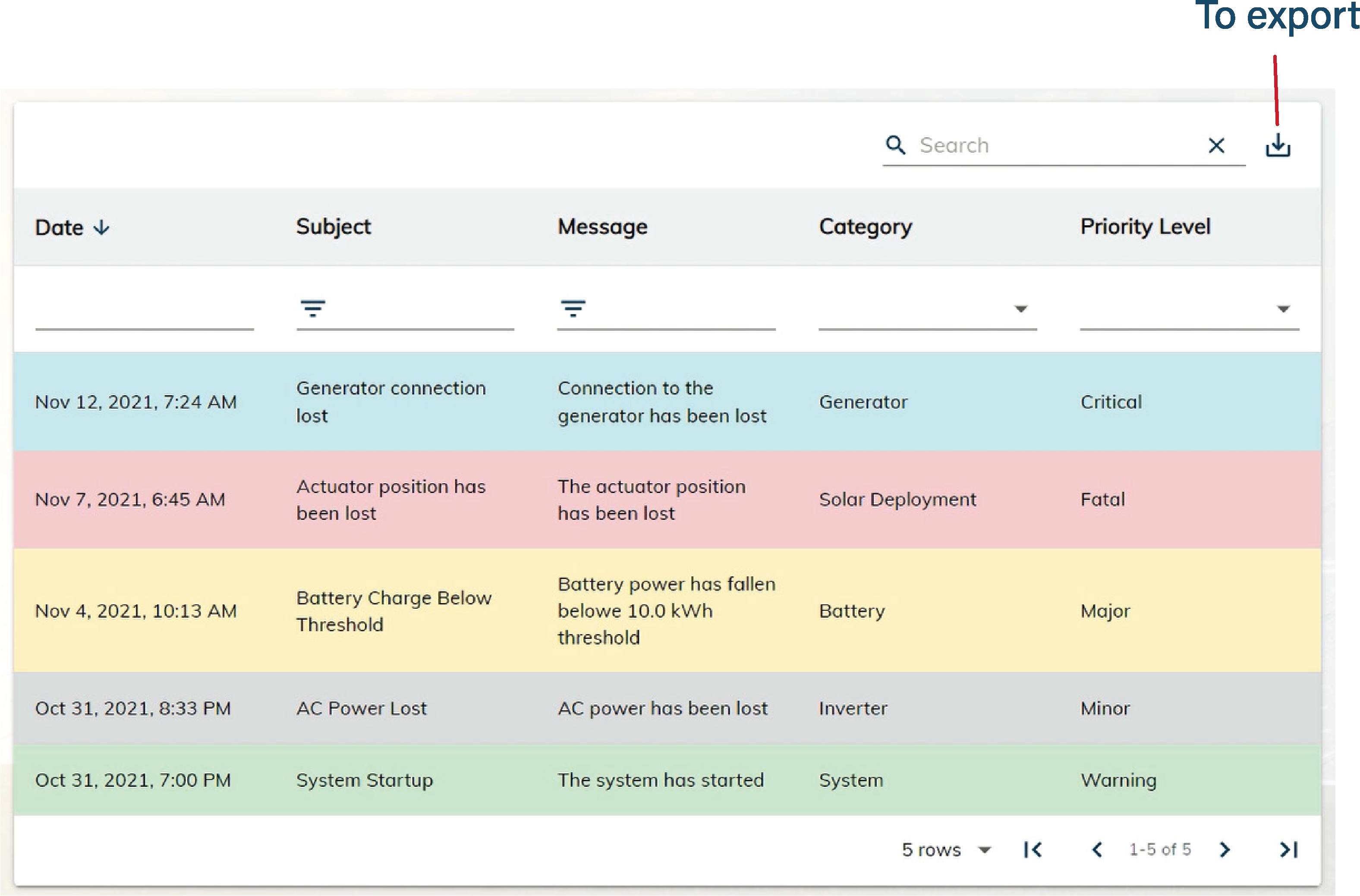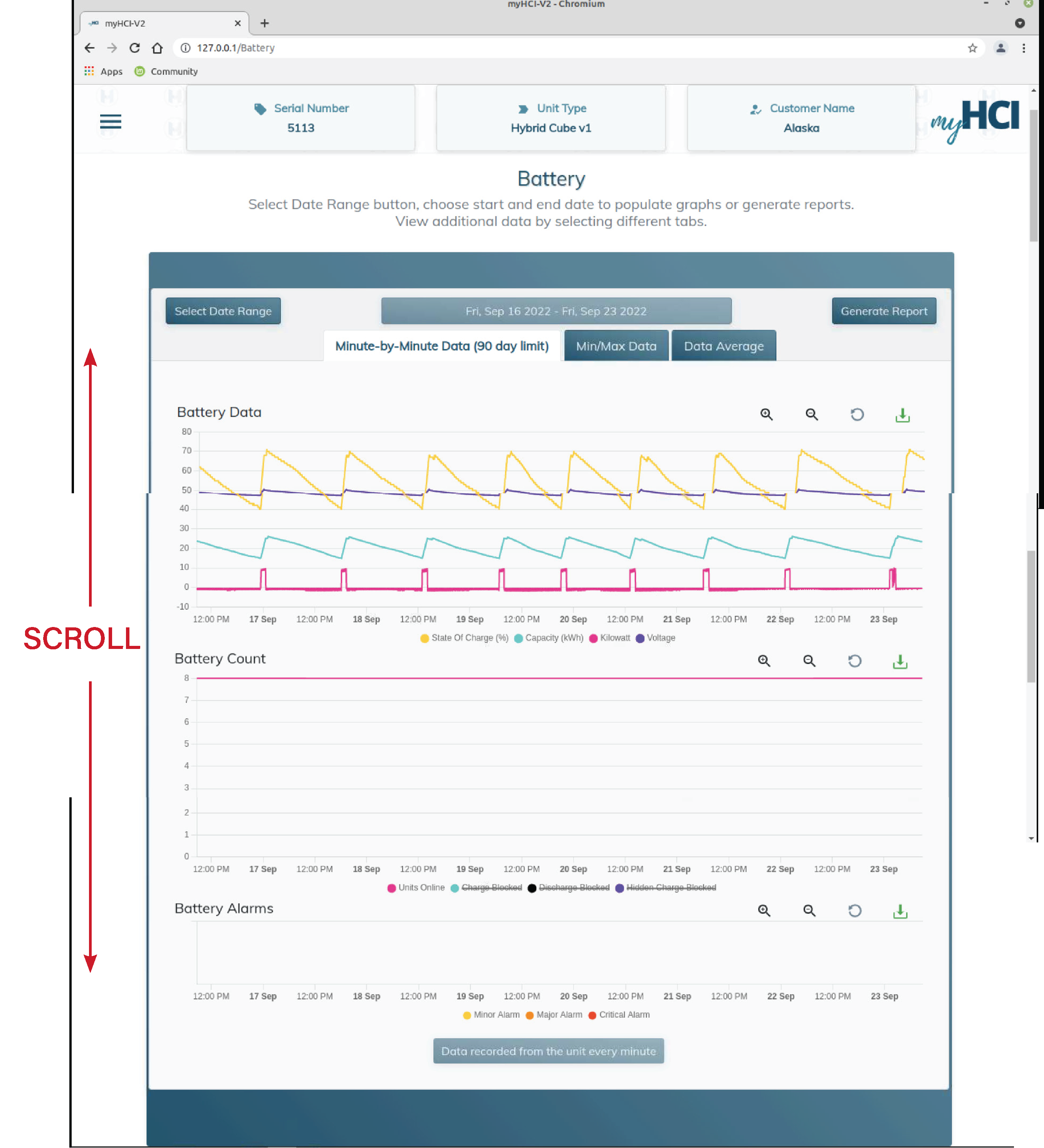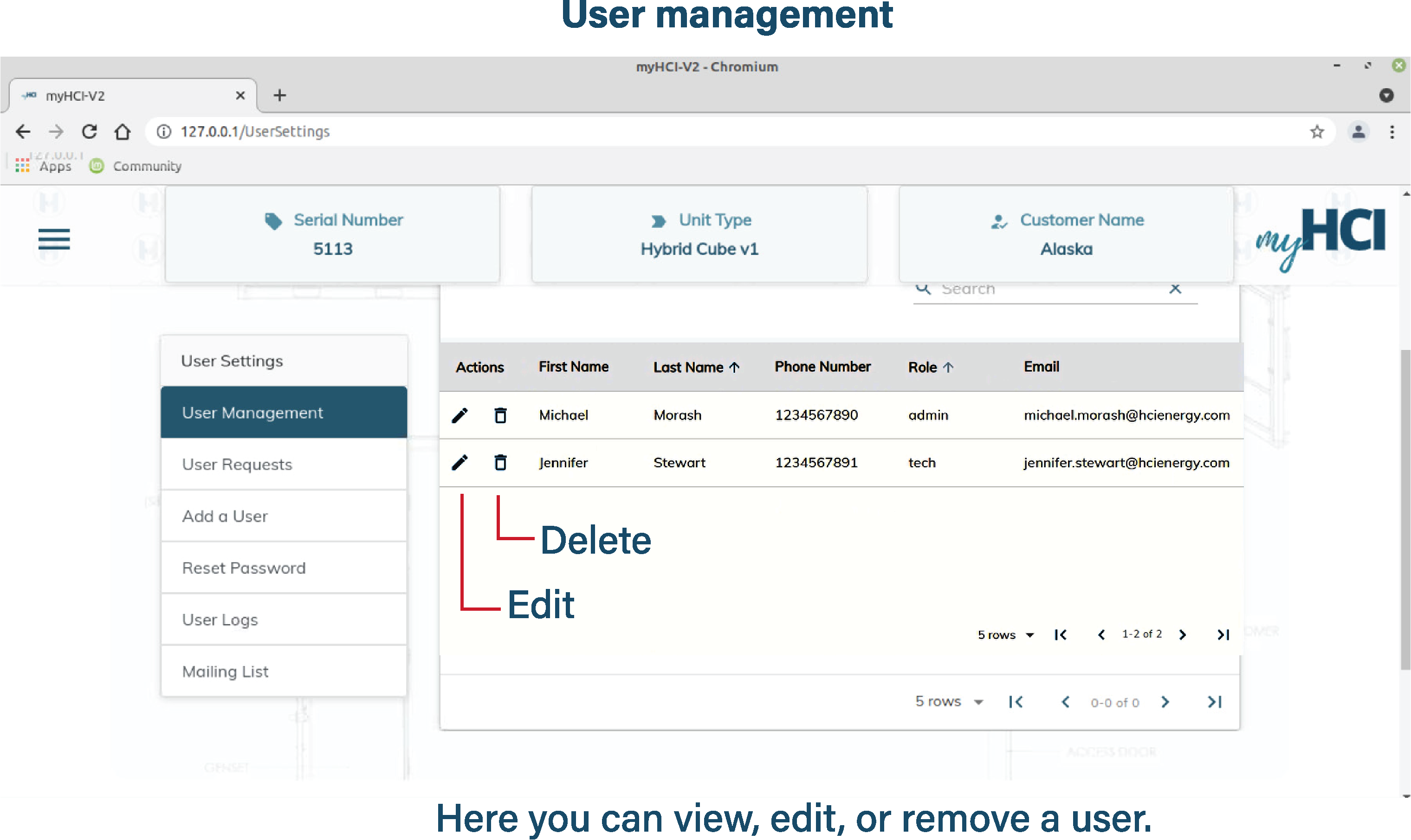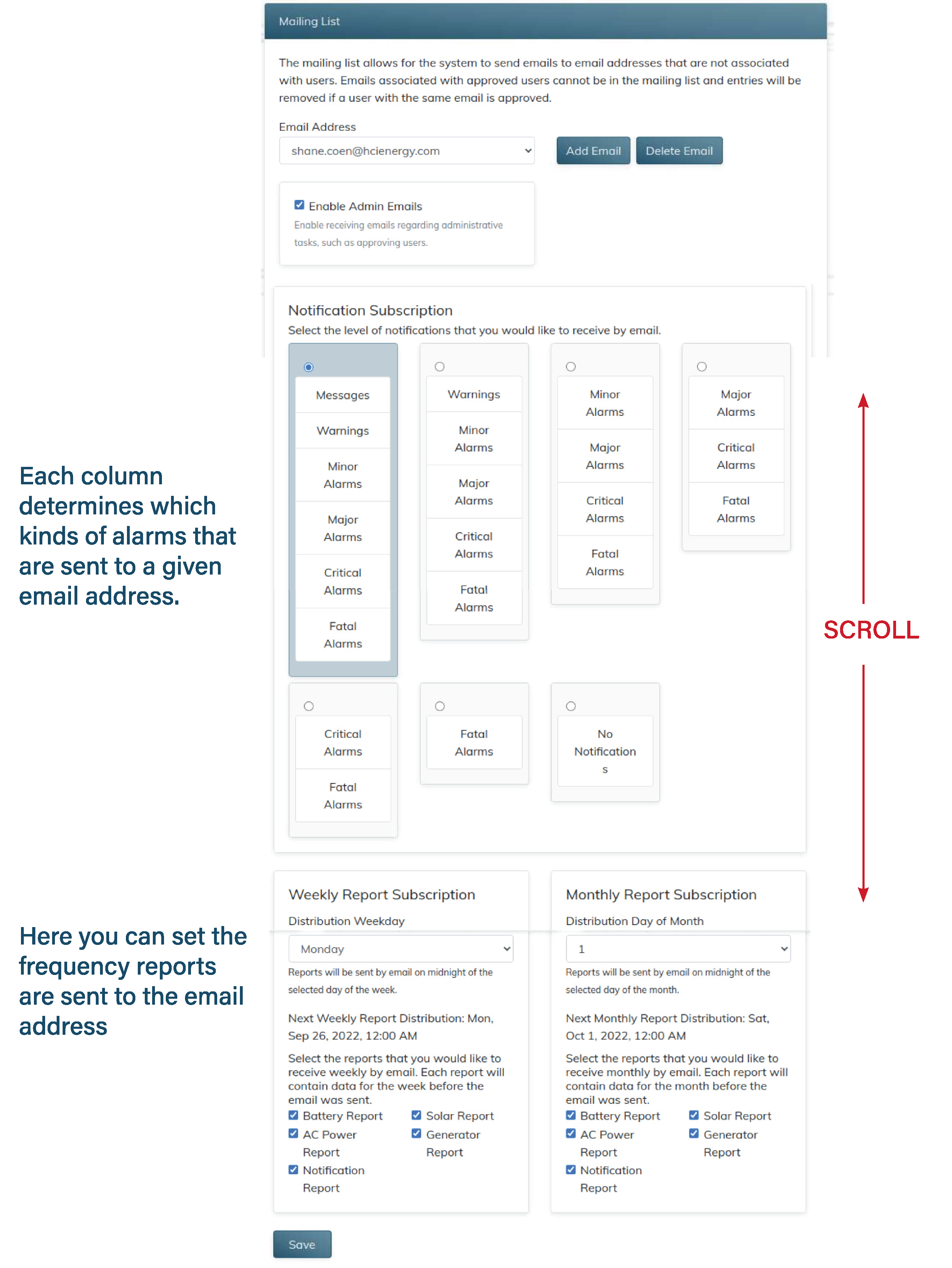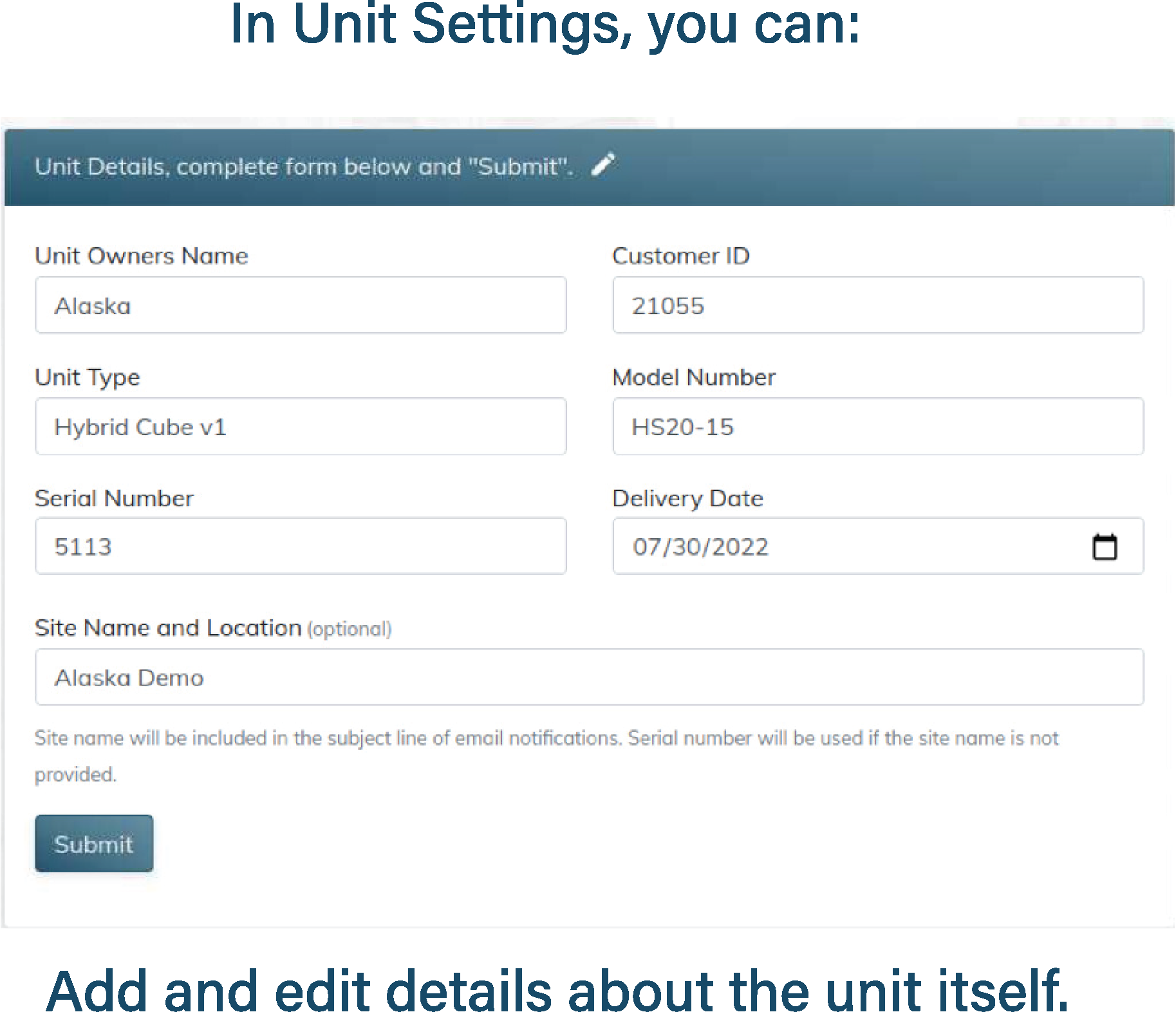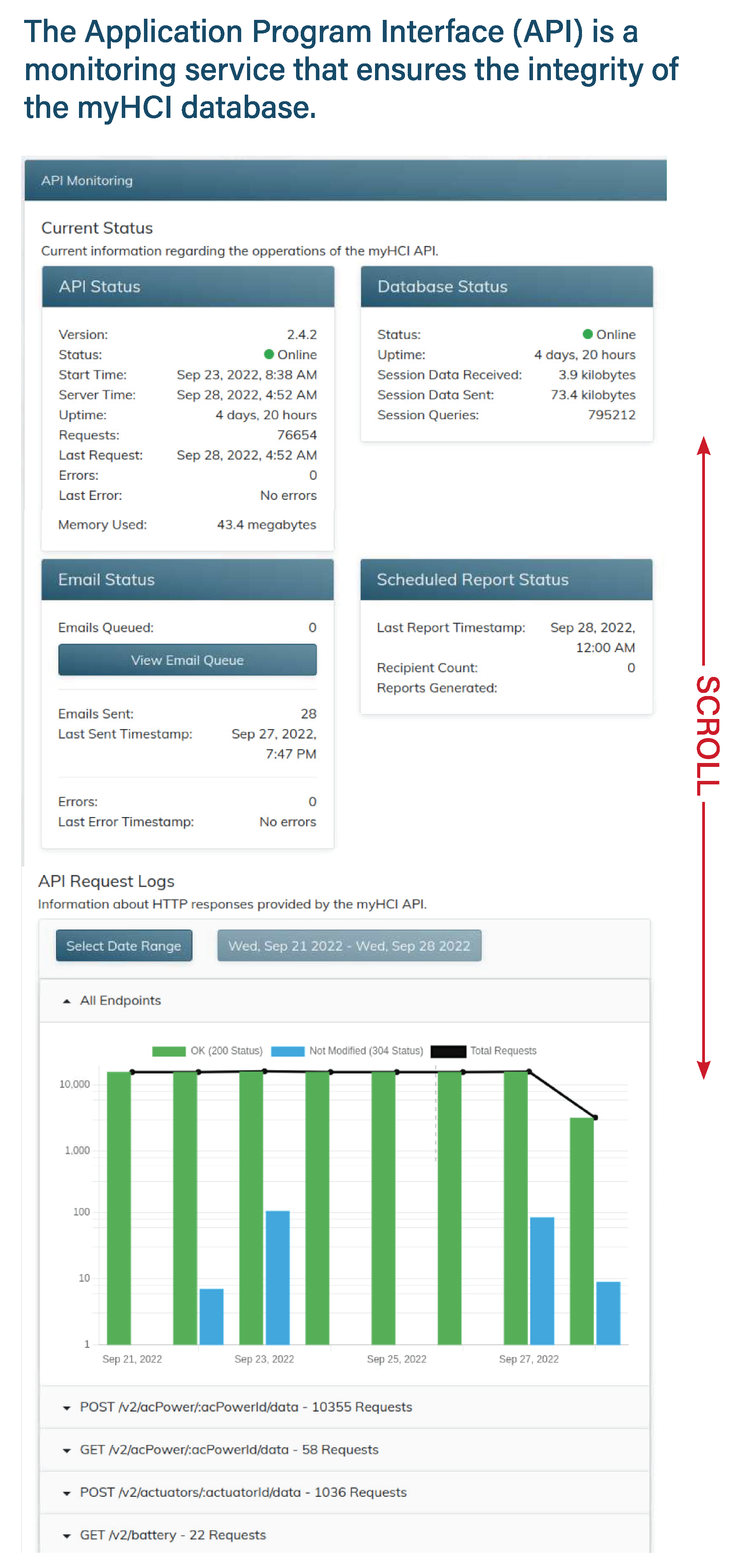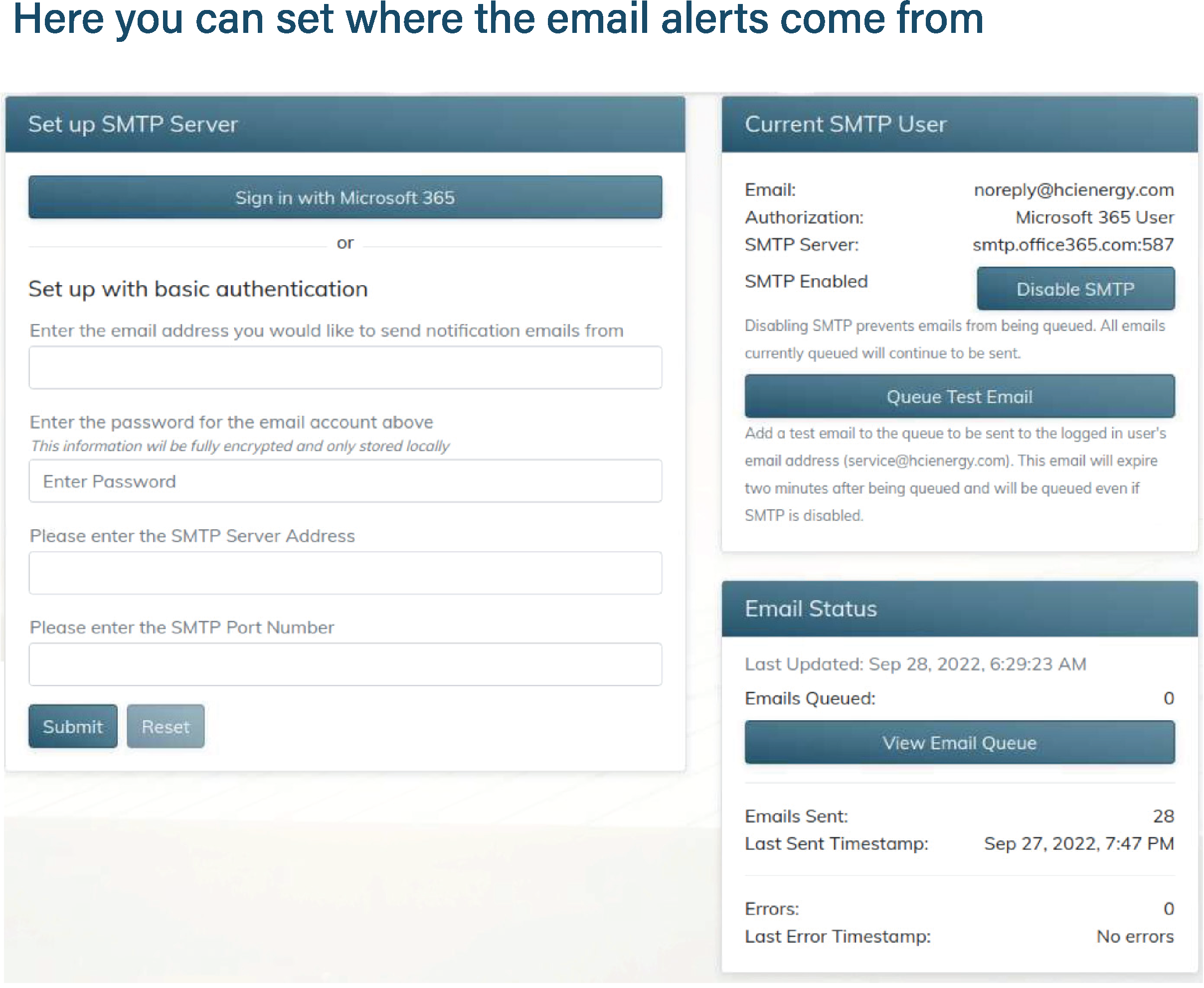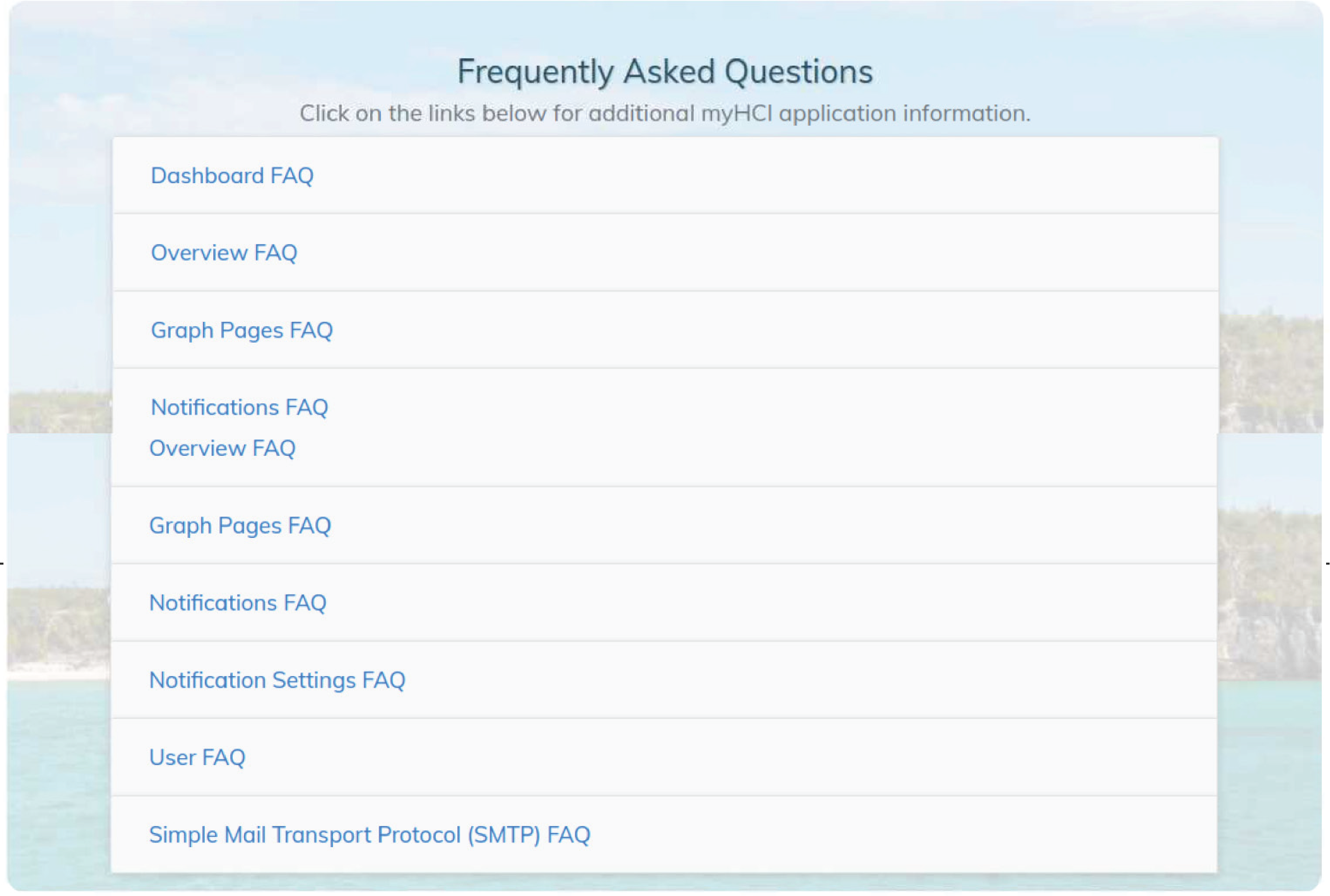How to operate the myHCI portal
|
|
||||||||
OVERVIEW: |
||||||||
| The myHCI software suite is browser-based analytics tool for viewing and managing information on the HCI Energy's family of products. This software can be accessed via the desktop on all HCI Energy LLC products. This software package operates with three different account types with varying levels of permissions and features: Tech, Admin, Super User/Master. Each account has all of the features and permissions of the levels below. In general, Tech accounts may view and manipulate data in addition to being able to adjust personal settings. Admin accounts have user management tools and the ability to set up a custom email server. Super User/Master accounts have the option to update unit information. |
||||||||
USER ACCOUNTS: |
||||||||
| Two ways to create a new account. 1. Users can be created directly via the ‘Add User’ tab within the Admin and Super User portals. In this method, the account is made active immediately after completing the form. 2. Any visitor to the login page can request an account. Upon completing the form, the account will be submitted to accounts with Admin and Super User privileges for approval. |
||||||||
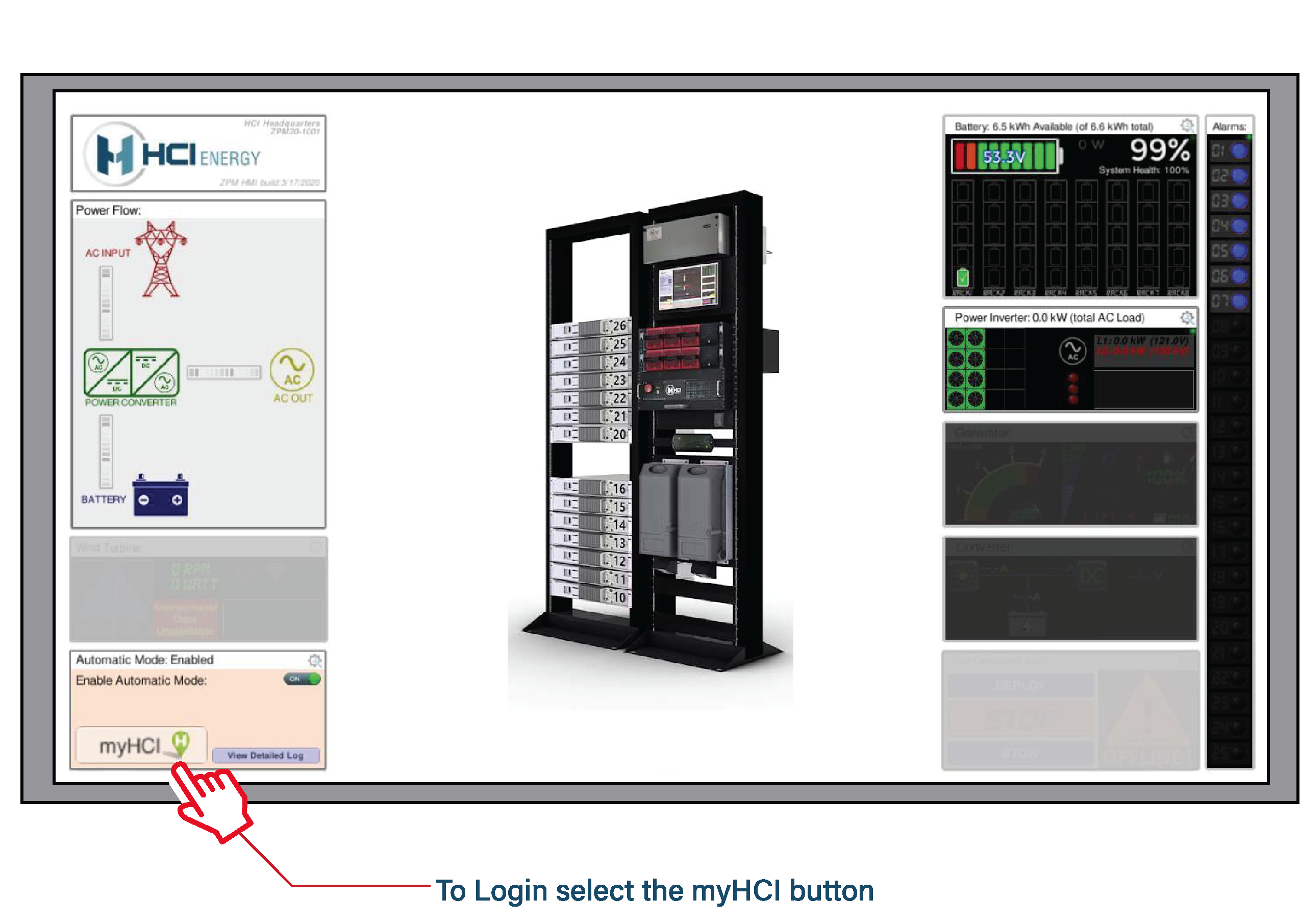 |
||||||||
CREATING AND APPROVING NEW ACCOUNTS: |
||||||||
 |
||||||||
|
NOTE: |
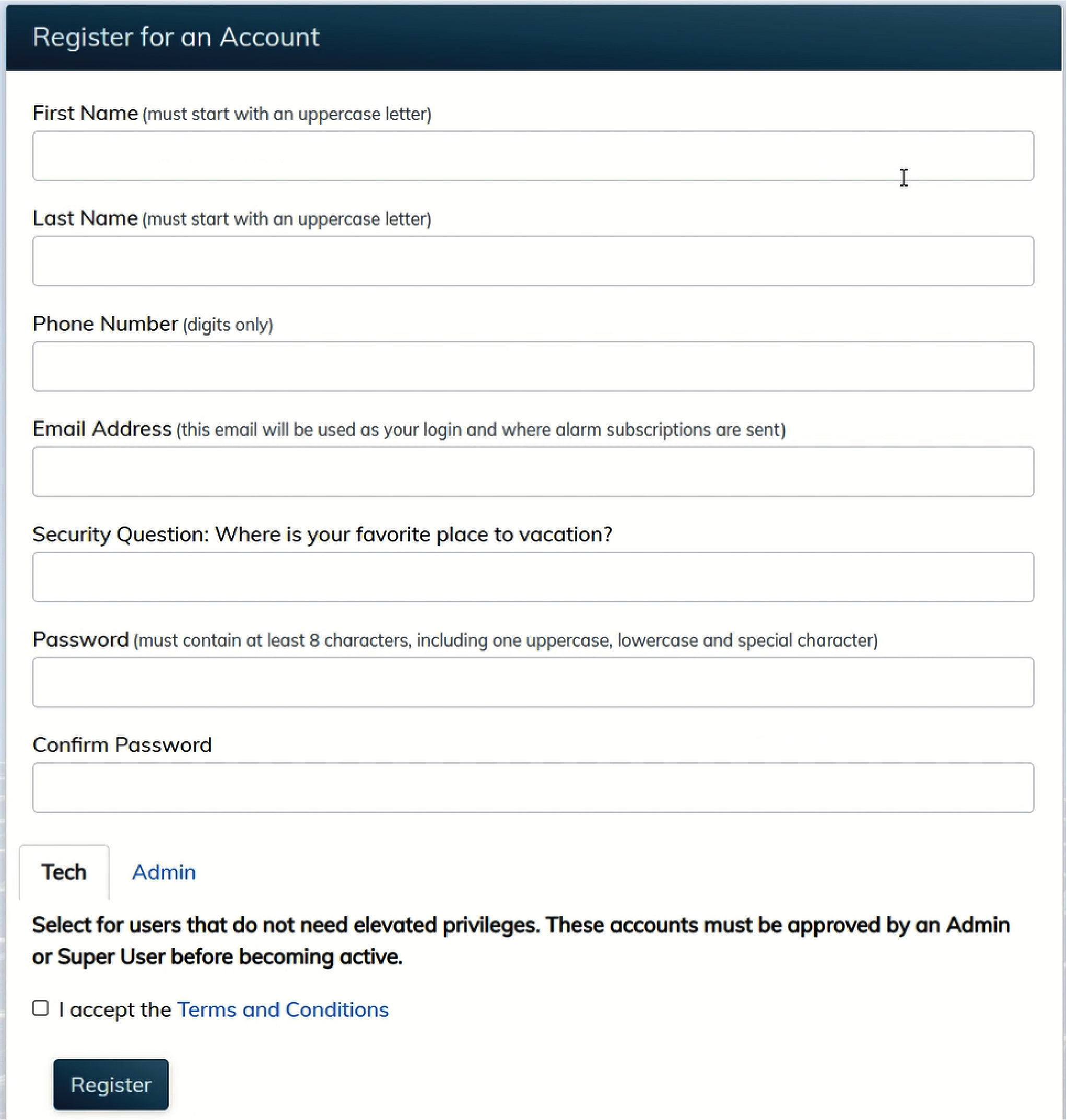 |
|||||||
|
||||||||
| DATA ANALYTICS: Each window displays DATA for the last 24 hours of operation. The system records up to 90 days of data for each function. |
||||||||
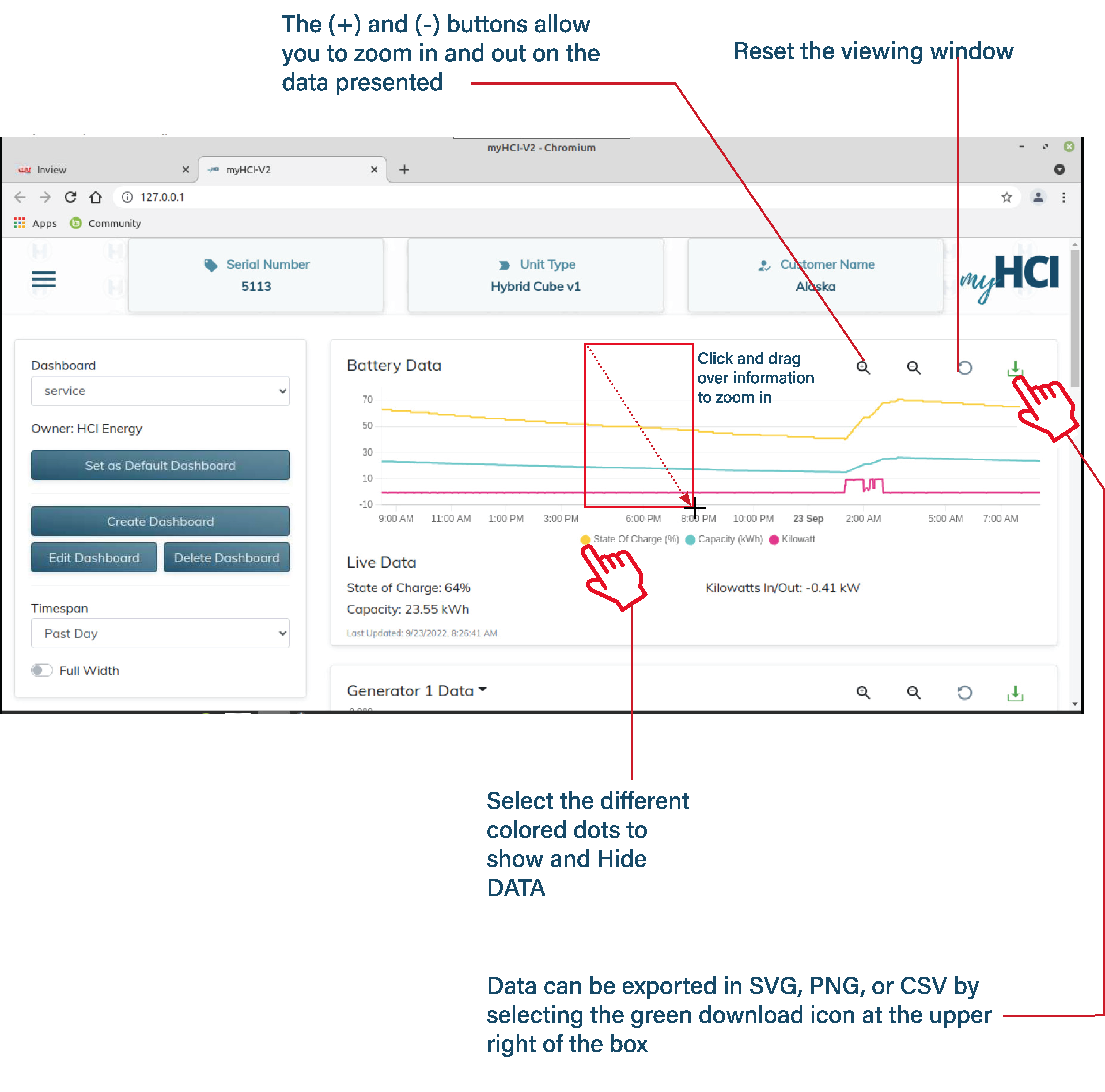 |
||||||||
|
||||||||
|
||||||||
| To get a report on a specific date range, click the Select Date range button at the top left. This will show a calendar to select a specific date range. | ||||||||
 |
||||||||
| NOTE: The file size for this could be quite large and may take a bit to generate. |
||||||||
| USER SETTINGS Select User Settings and it will display a navigation window with 4 choices |
||||||||
|
||||||||
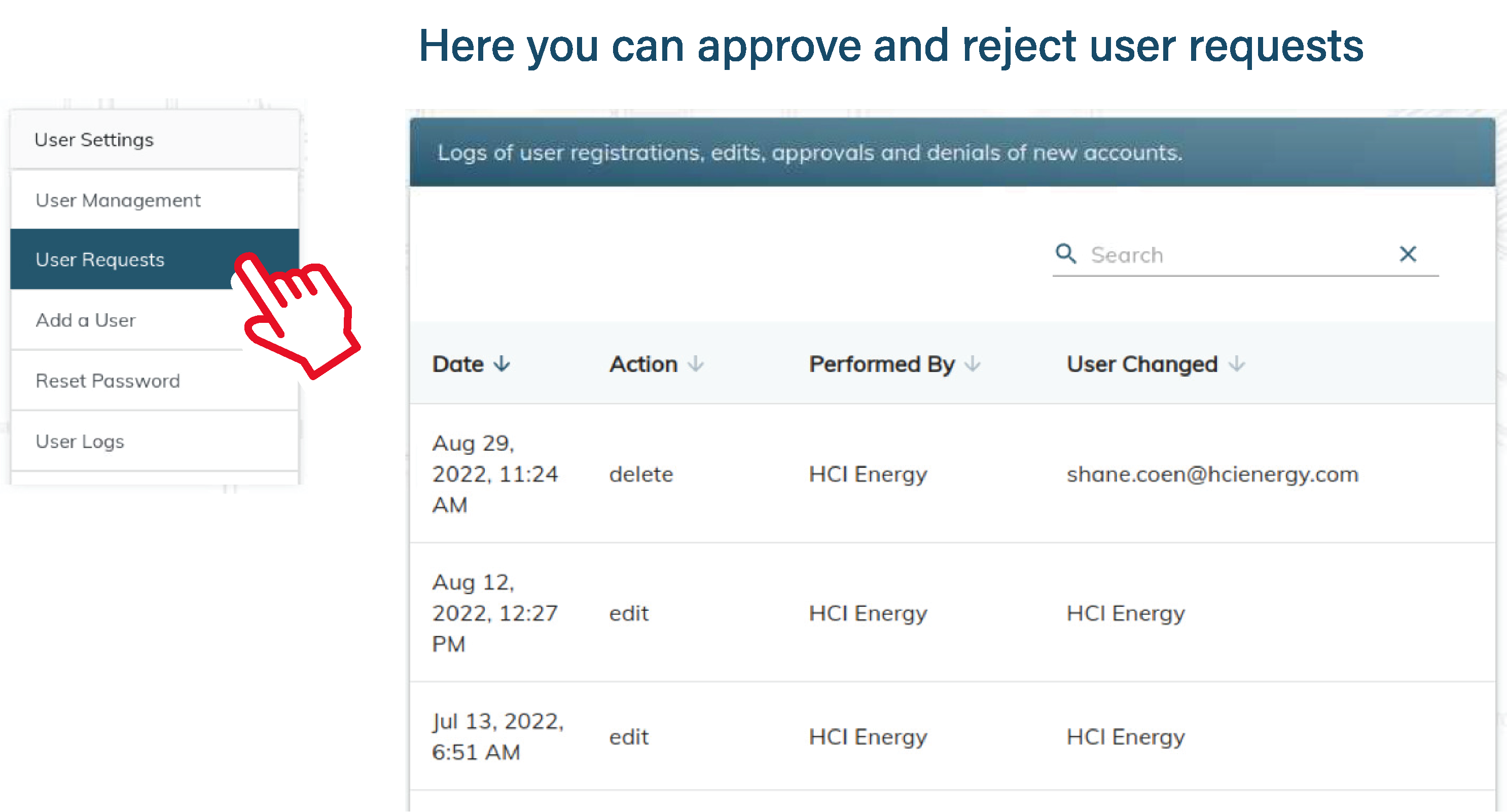 |
||||||||
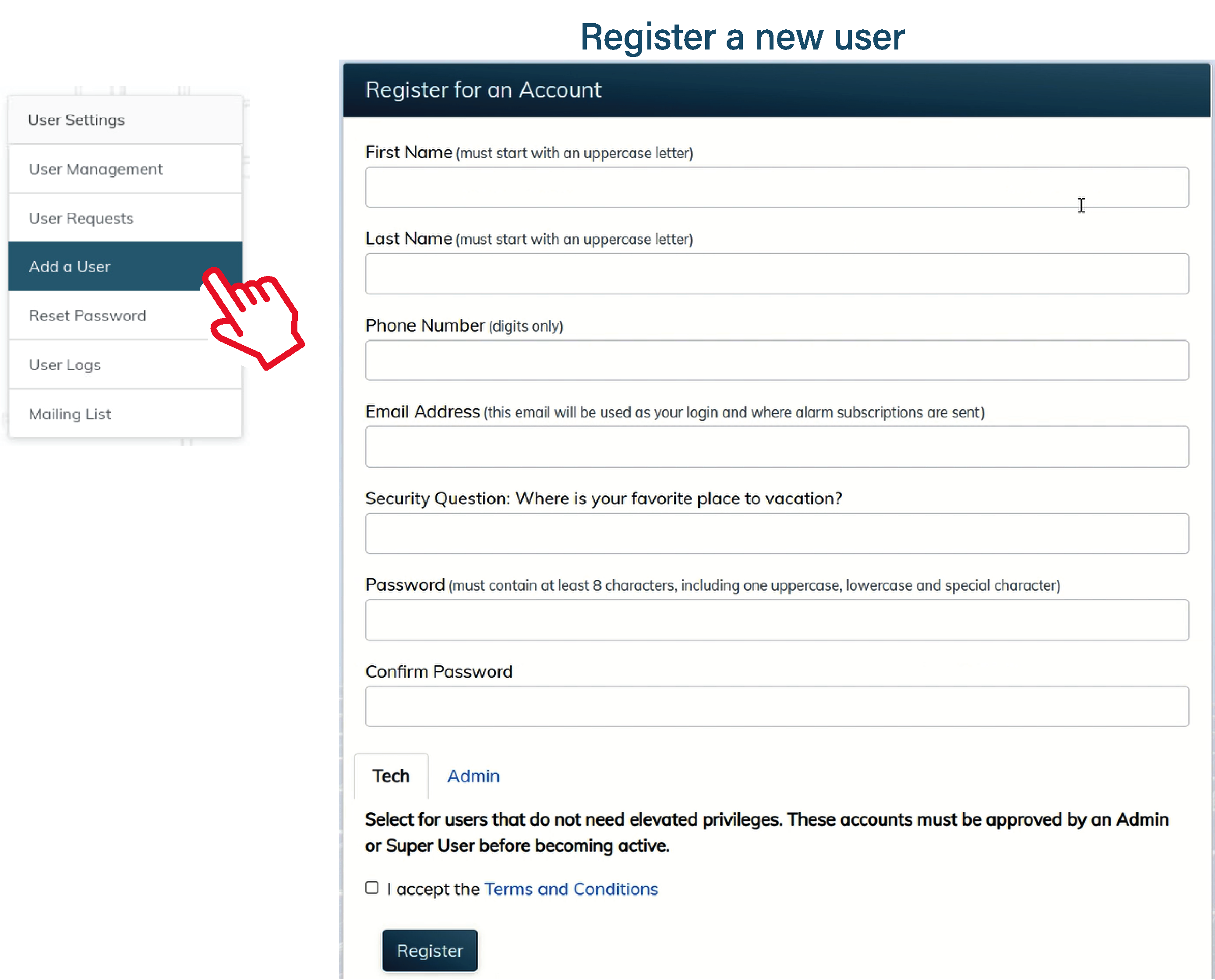 |
||||||||
 |
||||||||
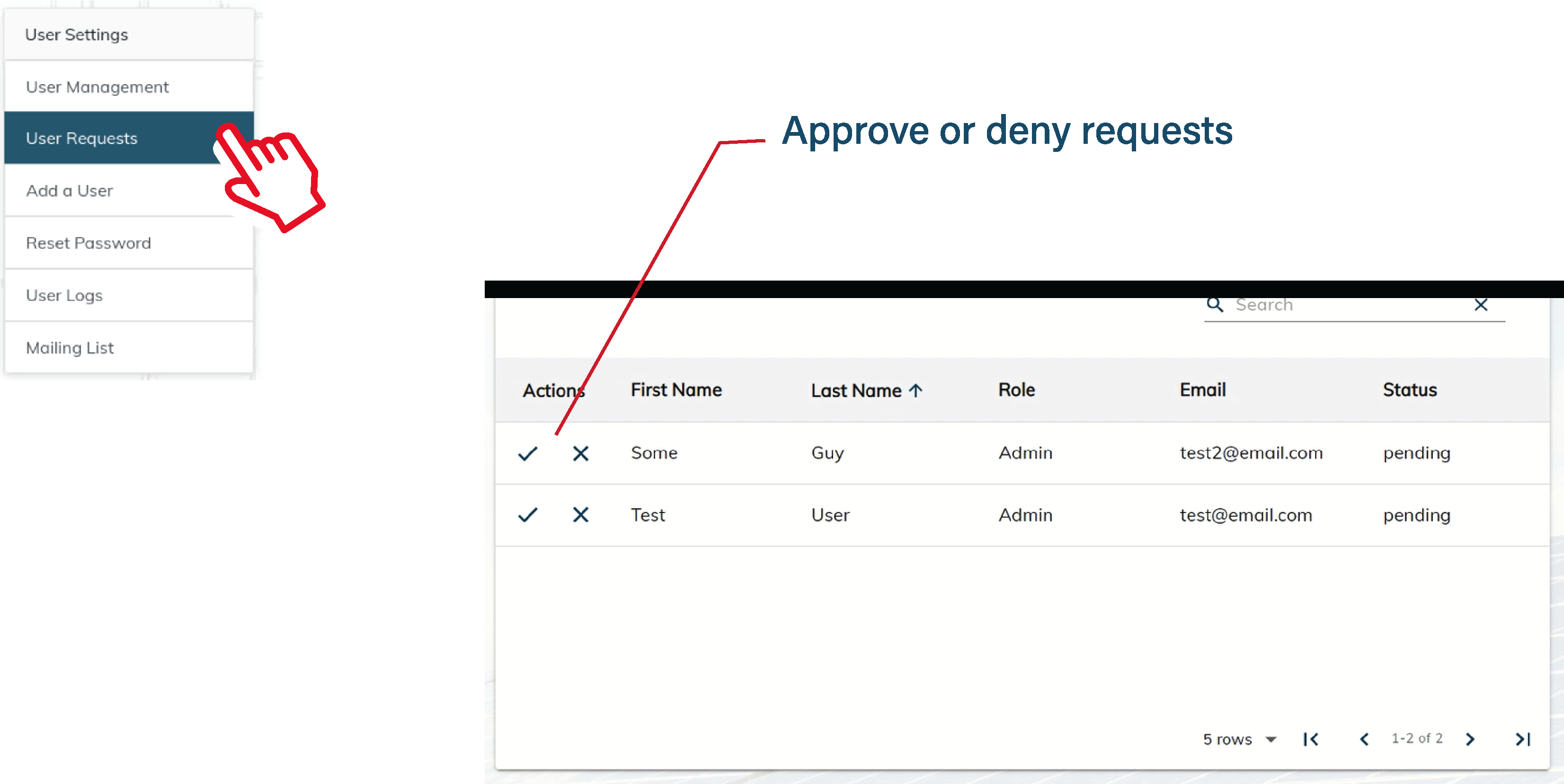 |
||||||||
| To manage account requests, select VIEW in the user requests. Here you can accept or decline requests for a user account |
||||||||
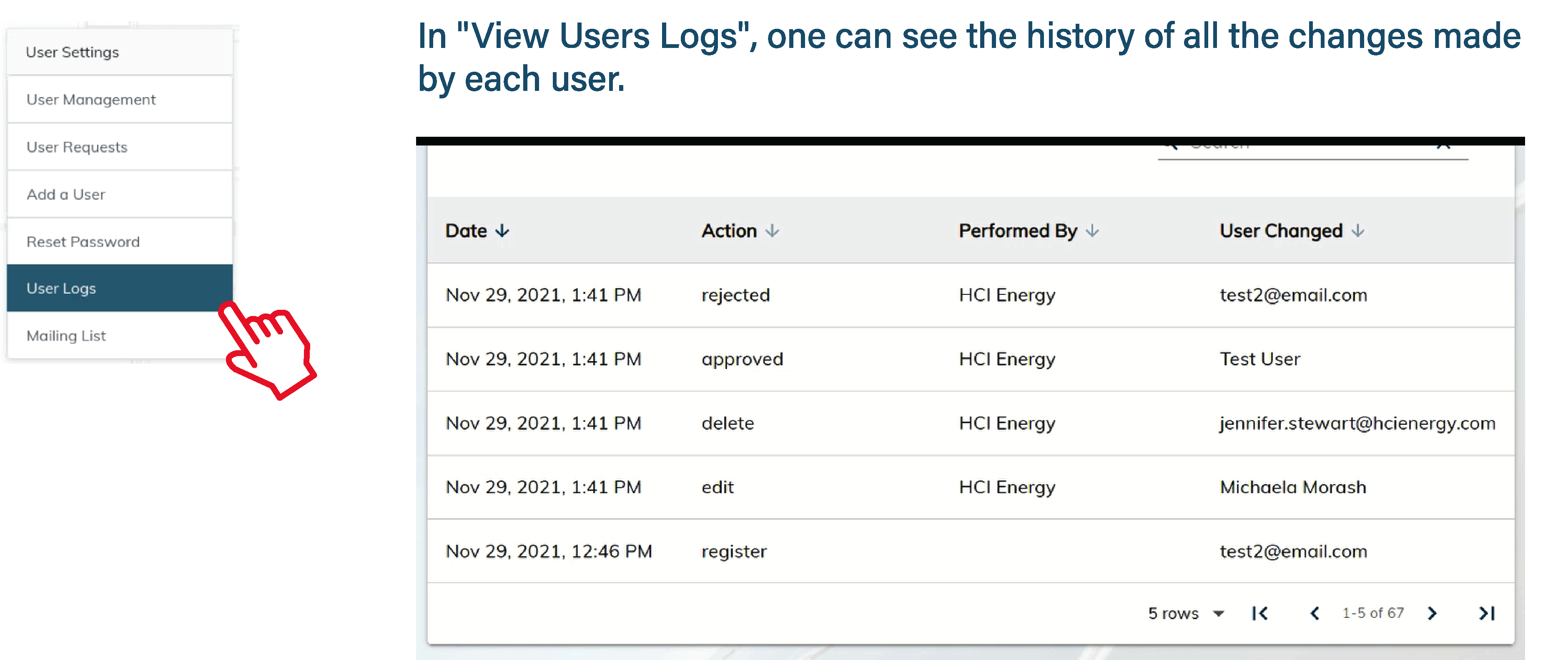 |
||||||||
|
||||||||
| ACCOUNT SETTINGS: | ||||||||
| By default, the myHCI webclient will email all accounts automatically when any kind of alarm or message is received from the HMI control software. To mitigate this, users of all types may unsubscribe to selected types of emails. To manage this, log into the desired account and select “Alarm Settings” within the navigation panel. Depending on the account type, this may be listed under a drop down labeled “Settings”. Selecting this will show an input slider depicting increasing levels of severity from left to right. By default, each user will be set to the lowest level of “All Messages" Selecting any of the other five alarm options will unsubscribe the user to all emails with a priority below the option selected. Selecting the highest level will leave the user only subscribed to emails that pertain to fatal system errors. |
||||||||
|
||||||||
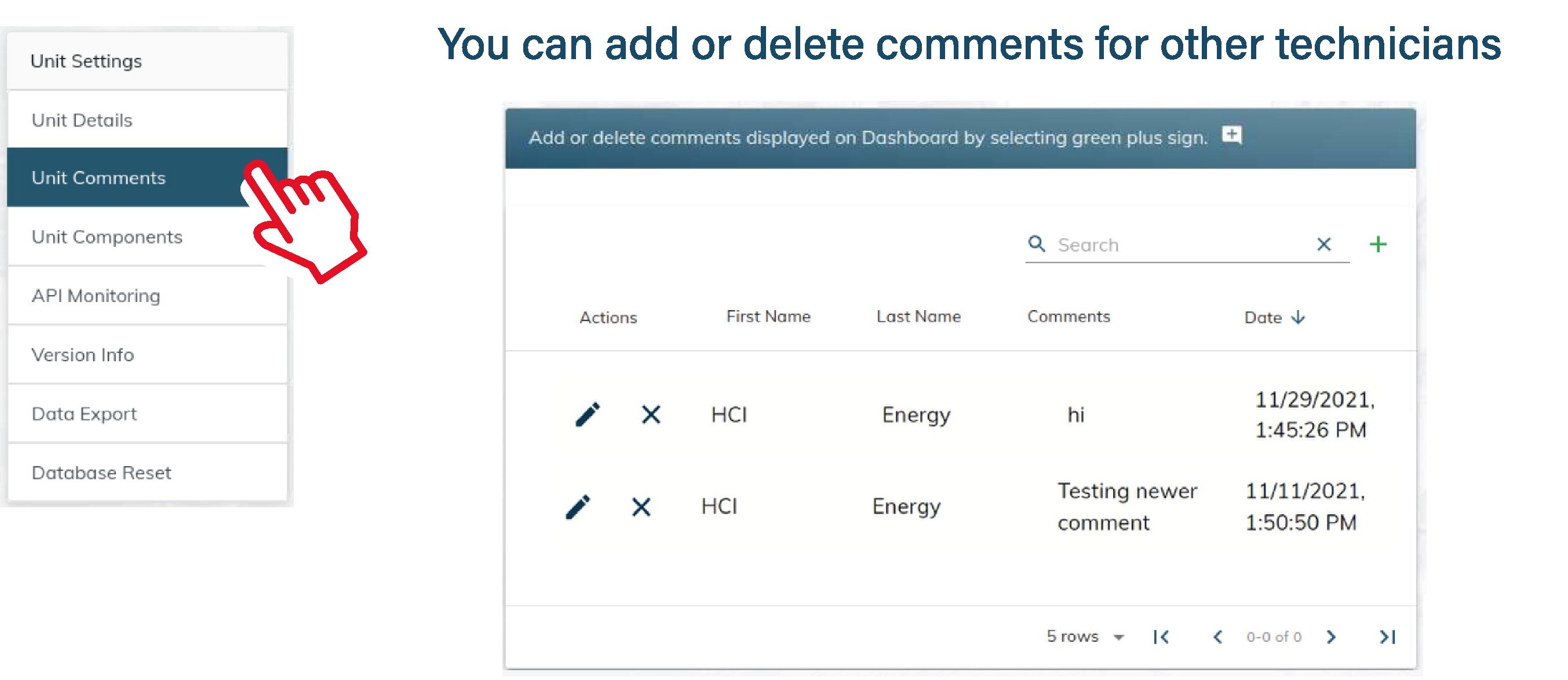 |
||||||||
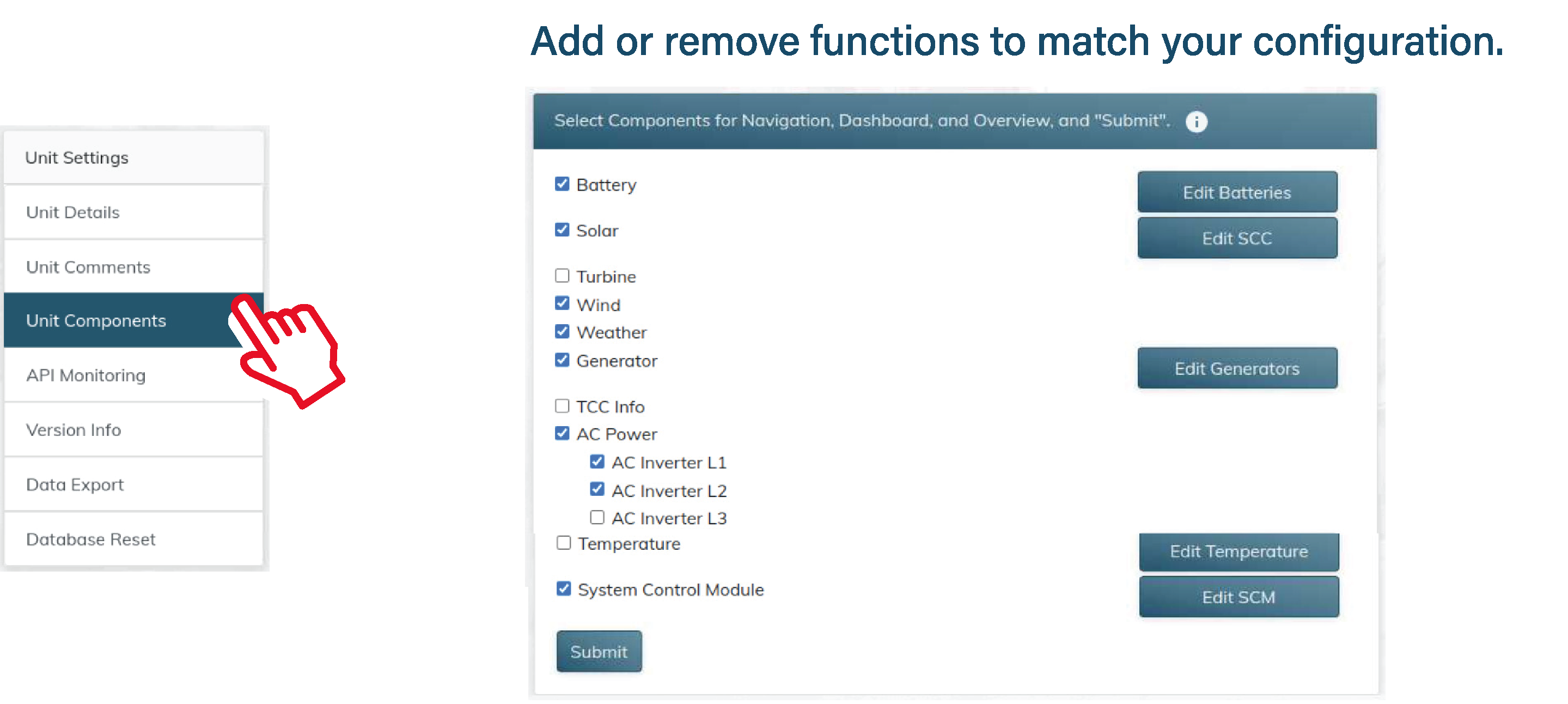 |
||||||||
|
||||||||
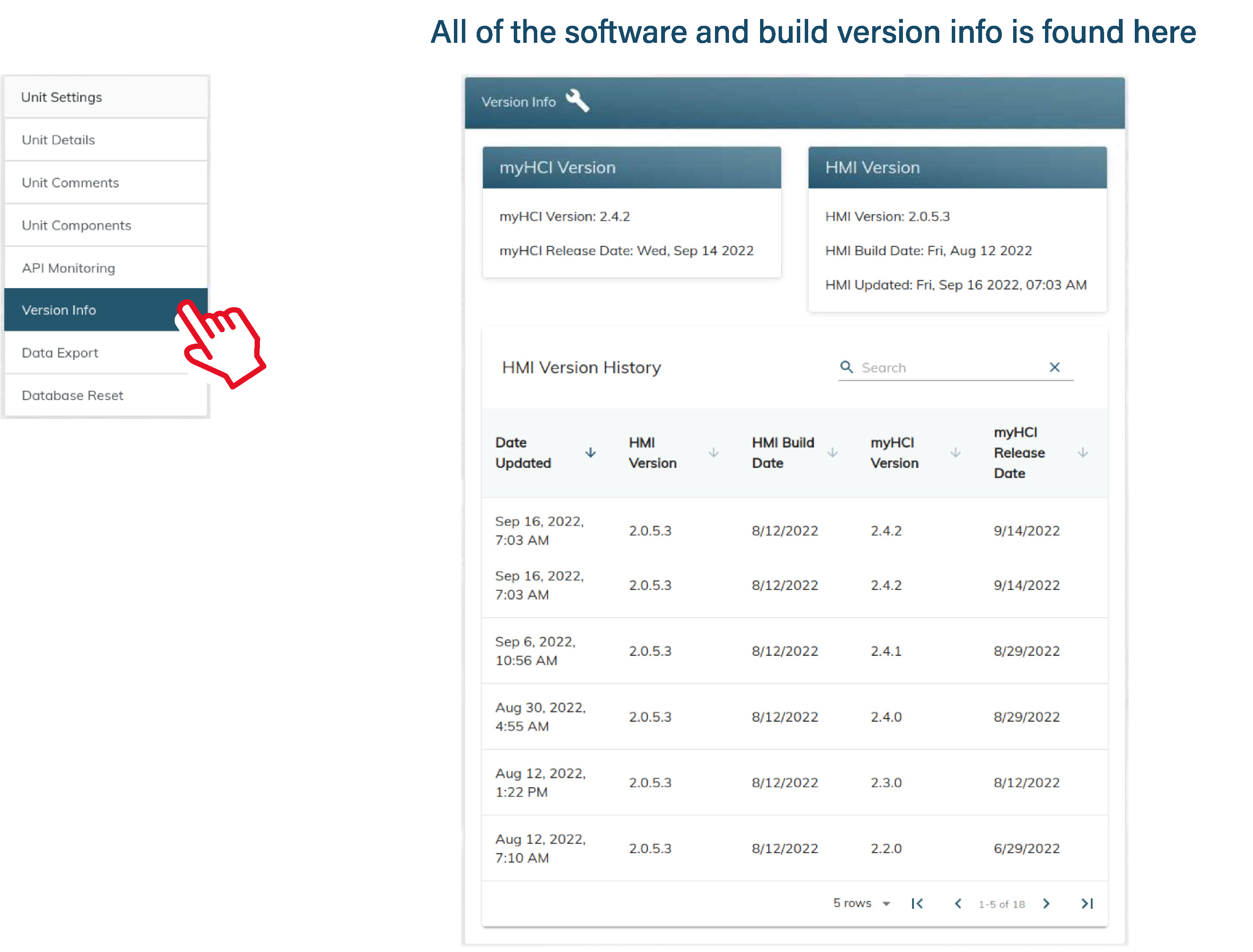 |
||||||||
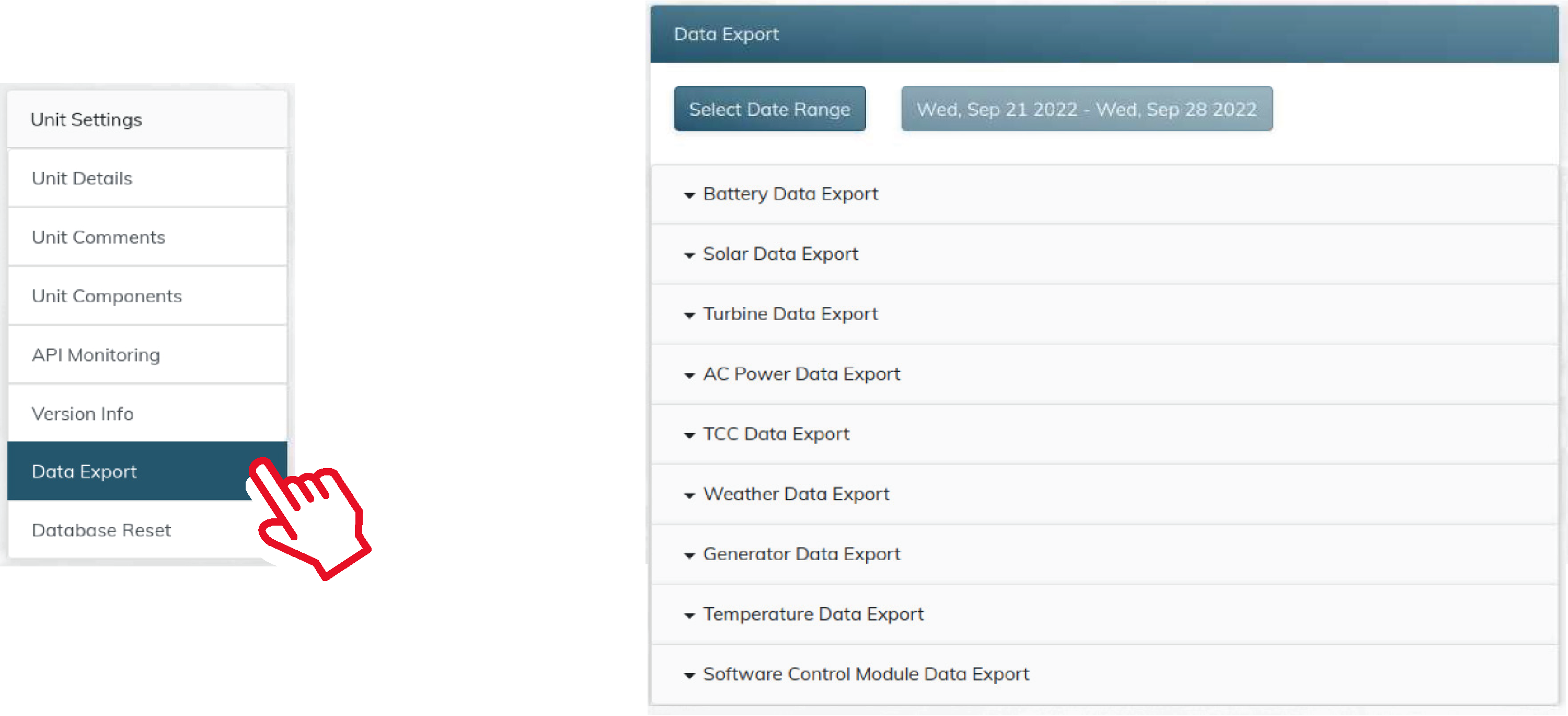 |
||||||||
| Here is a list of the different functions of the Shelter select the arrow next to solar for example and it will show an array of data fields | ||||||||
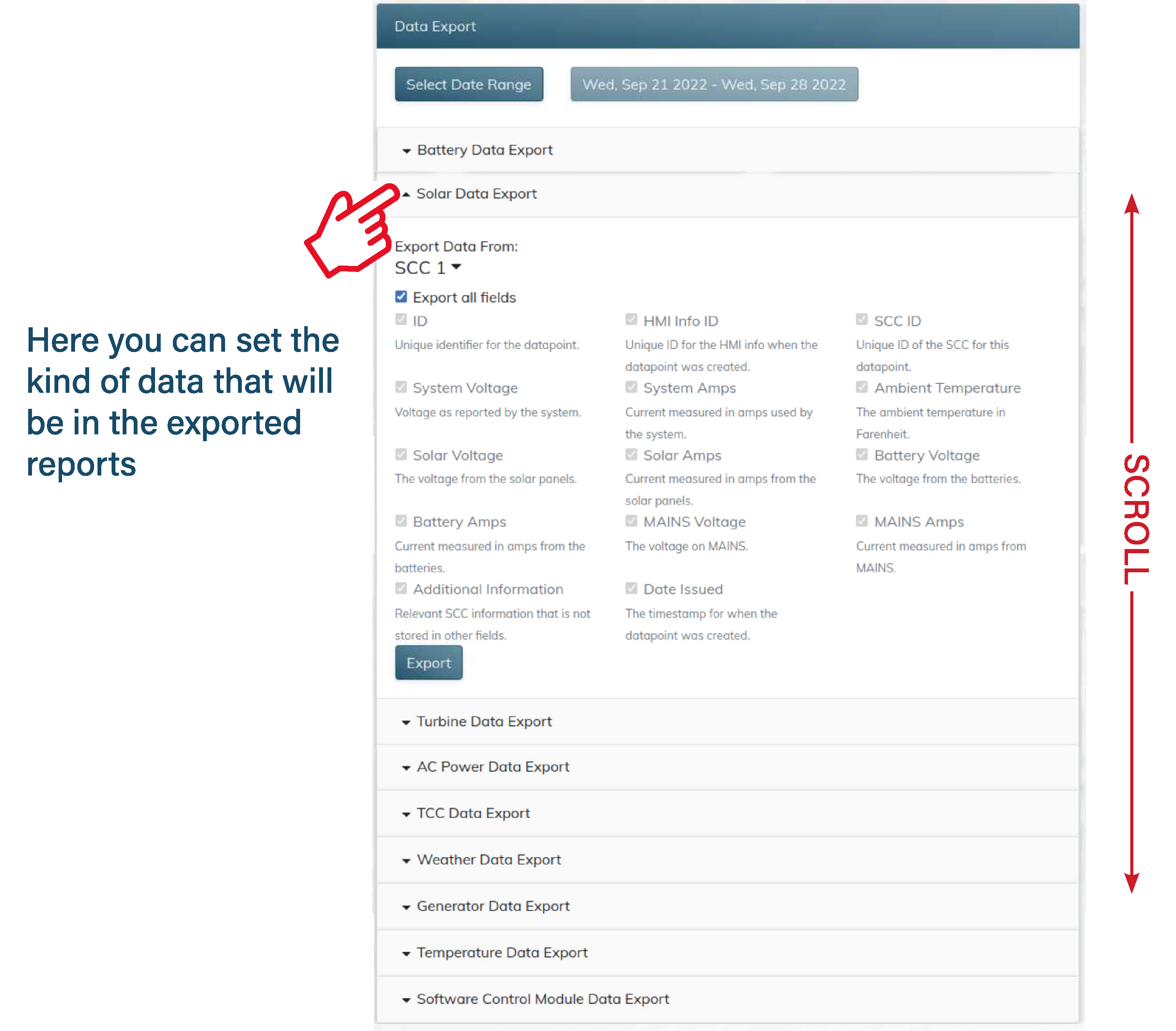 |
||||||||
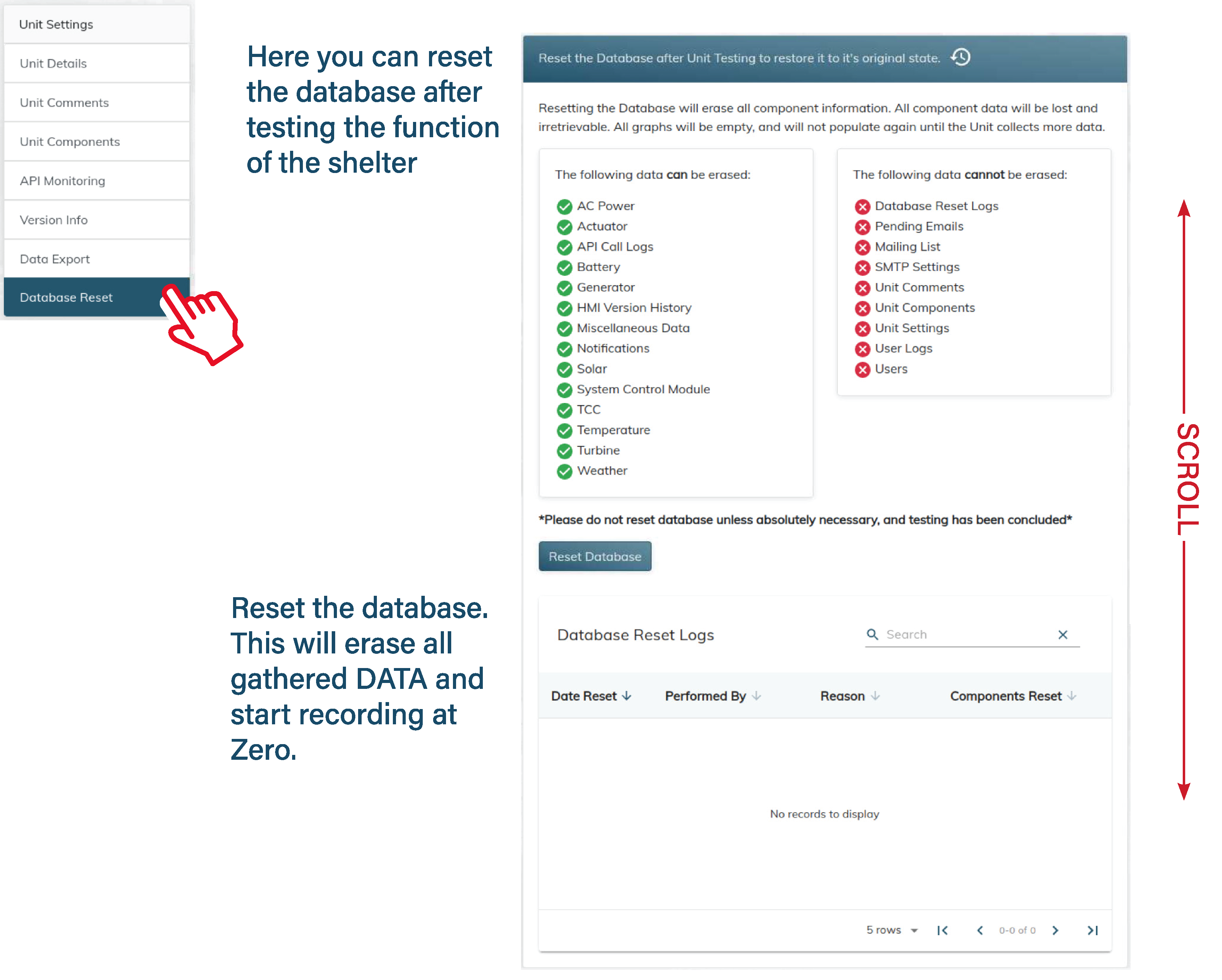 |
||||||||
|
||||||||
|
||||||||
| Unit connectivity methods/HCI support ranked from most preferred to the least preferred. | ||||||||
| 1. Cell router or satellite (still needs tested on satellite) | ||||||||
| a. HCI will have VNC access and will monitor system 24-7. The major advantage here is that if we see an issue, we can take immediate action. If we can’t fix issue remotely, we will contact customer and tech of the site immediately. If no tech is available, HCI will communicate with customer and make travel plans immediately. b. HCI can provide VNC access and email notification to whoever needed on customer side to monitor site. Emails will also get weekly and monthly reports from the unit. It’s recommended that the onsite tech of site has VNC access and remote connectivity. Note: Internet connected HCI logs all notifications and data and sends emails this replaces SNMP. c. This is the most secured way regarding customer internal network. Our system will have no ties to the customer internal network. It will be on a complete network of its own. |
||||||||
| 2. Wi-Fi router installed by Customer to their local area network | ||||||||
| a. HCI will have VNC access and will monitor system 24-7. The major advantage here is that if we see an issue, we can take immediate action. If we can’t fix issue remotely, we will contact customer and tech of the site immediately if can’t be resolved remotely. If no tech is available, HCI will communicate with customer and make travel plans immediately. b. HCI can provide VNC access and email notification to whoever needed on customer side to monitor site. Emails will also get weekly and monthly reports of the unit. It’s recommended that the onsite tech of site has VNC access and remote connectivity. Note: if internet connected HCI logs all notifications and data and sends emails this replaces SNMP. c. Customer is responsible for their own security setup with the router. |
||||||||
| 3. HCI equipment connected directly to the internal network (backhaul) | ||||||||
| a. HCI will set up the unit for direct connect (wired) VNC access. Only the customer on the internal network would be able to remote into site. b. The customer will resume all responsibilities for monitoring site. If there’s an issue with the system, its up to the customer to contact HCI Energy for assistance. c. Customer will need to share screen with HCI Energy and allow control with VNC (Microsoft Teams is common) if there’s a pressing manner. It will take HCI Energy time to come up with a solution in some cases. d. The customer is responsible for getting tech and HCI Energy involve for resolving on site issues. |
||||||||



